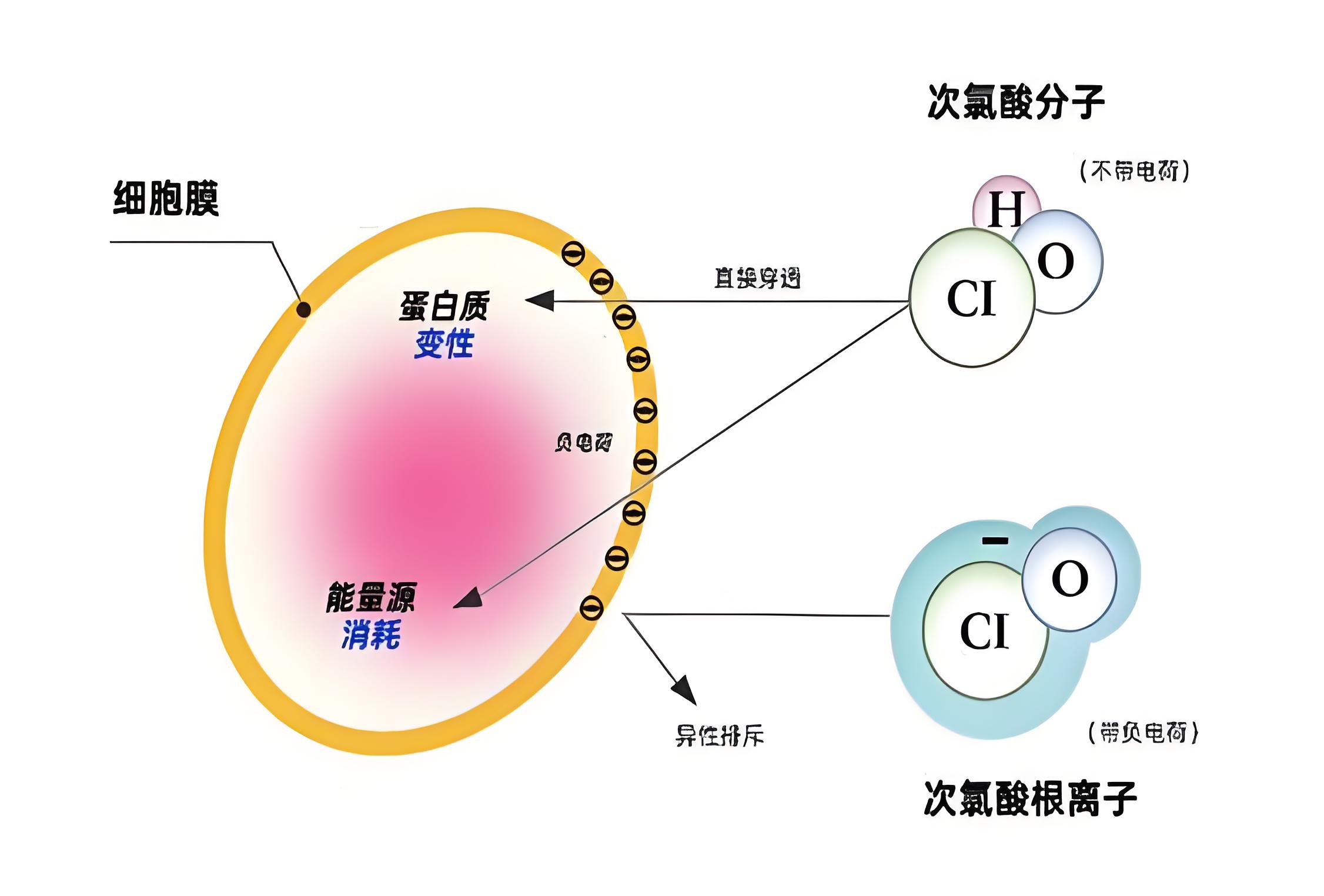In the shipping industry, the management of ship ballast water is a crucial link. Ballast water, as an important part for maintaining the balance of ships, has diverse sources and may contain various bacteria, viruses and harmful microorganisms. These microorganisms may cause potential hazards to the environment and personnel during the ship’s voyage. Therefore, it is an unignorable responsibility of the shipping industry to conduct appropriate treatment of ballast water to ensure its cleanliness and safety.
Sodium hypochlorite, as an efficient and low-cost disinfectant, plays an important role in the treatment of ship ballast water.
The Disinfection Principle of Sodium Hypochlorite
Sodium hypochlorite (NaClO) is a strong oxidant, and its disinfection principle lies in its ability to decompose and generate hypochlorous acid (HClO). Hypochlorous acid has strong oxidizing ability, which can destroy the cell walls and cell membranes of microorganisms, making them lose their activity, thereby achieving the purpose of sterilization and disinfection. In addition, sodium hypochlorite can also react with organic matter in water to reduce the chemical oxygen demand (COD) in water and further improve water quality.
The Application of Sodium Hypochlorite in the Treatment of Ship Ballast Water

Ship ballast water system
In the treatment of ship ballast water, the application of sodium hypochlorite is mainly reflected in the following aspects:
Direct dosing for disinfection: Directly adding sodium hypochlorite to ship ballast water can effectively kill bacteria, viruses and harmful microorganisms in the water. The dosage needs to be determined according to the pollution degree and volume of the ballast water to ensure the disinfection effect.
Electrolysis to produce sodium hypochlorite: Some advanced ship ballast water treatment systems adopt the method of electrolyzing seawater to produce sodium hypochlorite. This method is not only environmentally friendly and energy-saving, but also can adjust the production amount of sodium hypochlorite as needed to ensure the disinfection effect while avoiding waste.
Combined use with other disinfectants: To improve the disinfection effect, sodium hypochlorite is sometimes used in combination with other disinfectants. For example, when used in combination with disinfectants such as ozone and hydrogen peroxide, it can more effectively kill microorganisms in the water.
Advantages of Sodium Hypochlorite Application
Efficient sterilization: Sodium hypochlorite has strong oxidizing ability and can quickly kill various microorganisms in the water.
Low cost: The raw materials of sodium hypochlorite are widely available, the production process is mature, and the cost is relatively low.
Environmental protection and safety: The by-products produced during the disinfection process of sodium hypochlorite are few, have little impact on the environment, and are harmless to the human body.
Precautions
When using sodium hypochlorite to treat ship ballast water, the following points need to be noted:
Control the dosage: Excessive dosage may lead to excessive residual chlorine in the water, causing harm to the environment and personnel; too little dosage may fail to achieve the expected disinfection effect.
Regularly test water quality: Regularly test the ballast water to ensure that the water quality meets relevant standards.
Strengthen equipment maintenance: For the treatment system that adopts electrolysis to produce sodium hypochlorite, it is necessary to regularly inspect and maintain the equipment to ensure its normal operation.
Conclusion
Sodium hypochlorite, as an efficient and low-cost disinfectant, plays an important role in the treatment of ship ballast water. Through the rational application of sodium hypochlorite, microorganisms in the water can be effectively killed, ensuring the cleanliness and safety of ship ballast water. With the continuous improvement of environmental protection and safety requirements in the shipping industry, the application prospect of sodium hypochlorite in the treatment of ship ballast water will be broader.

